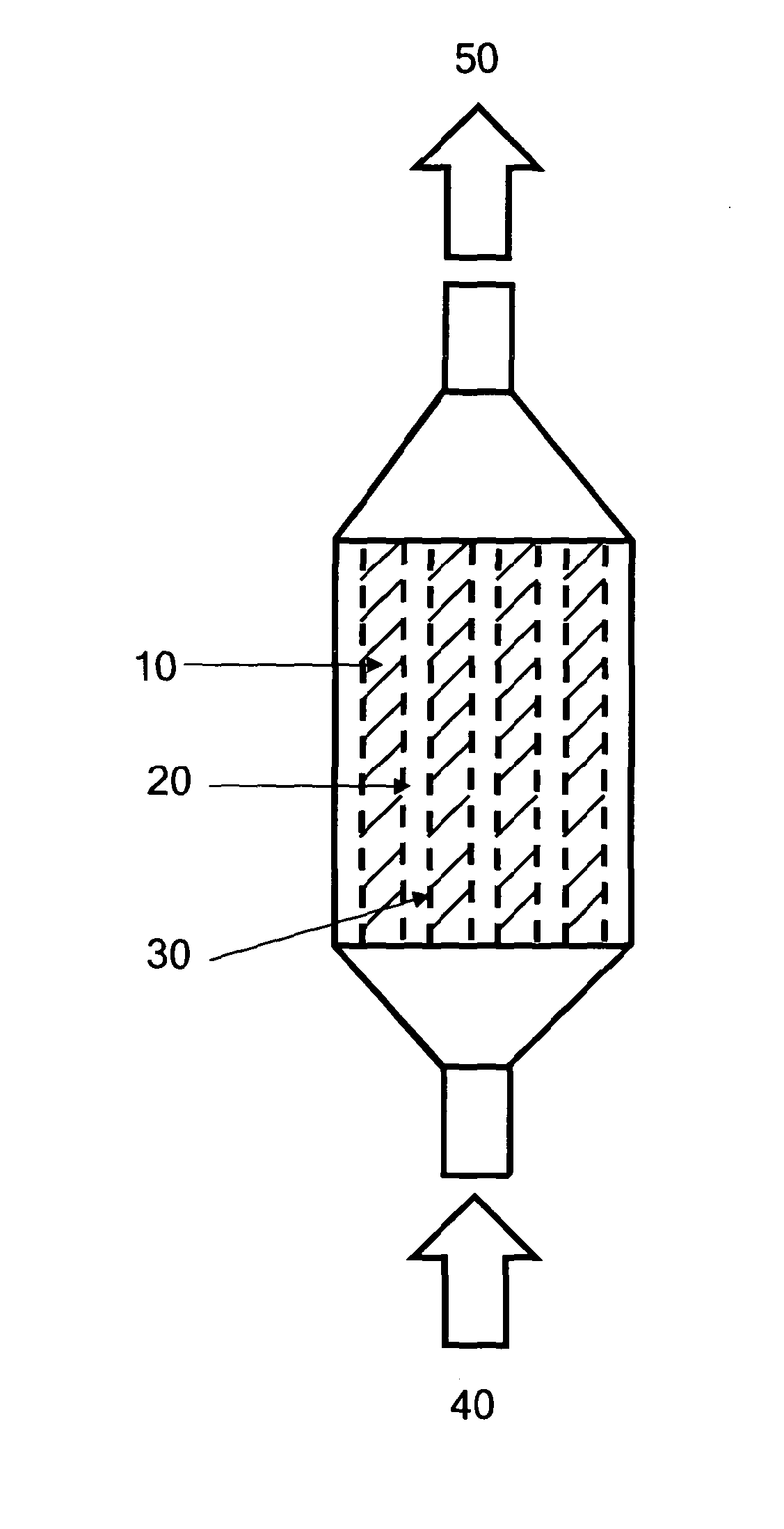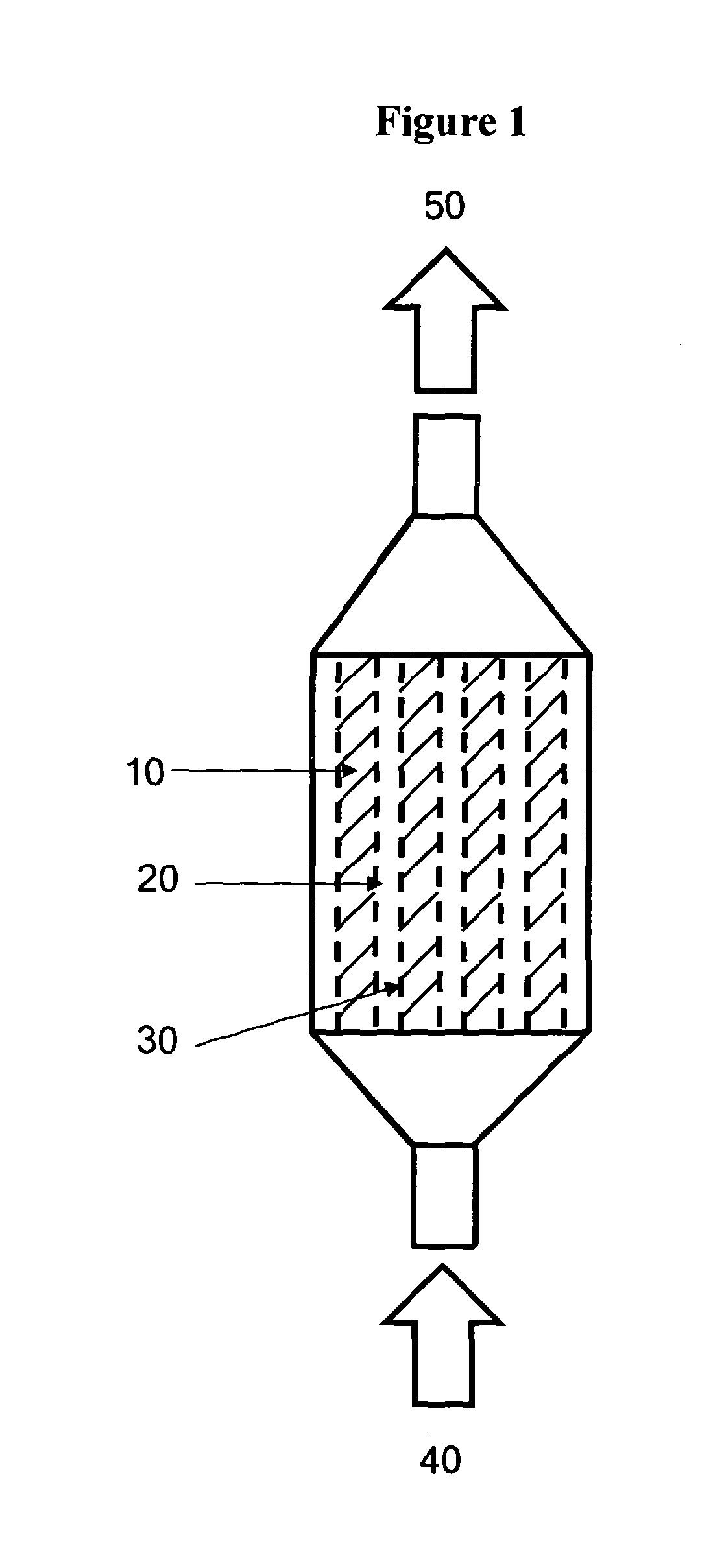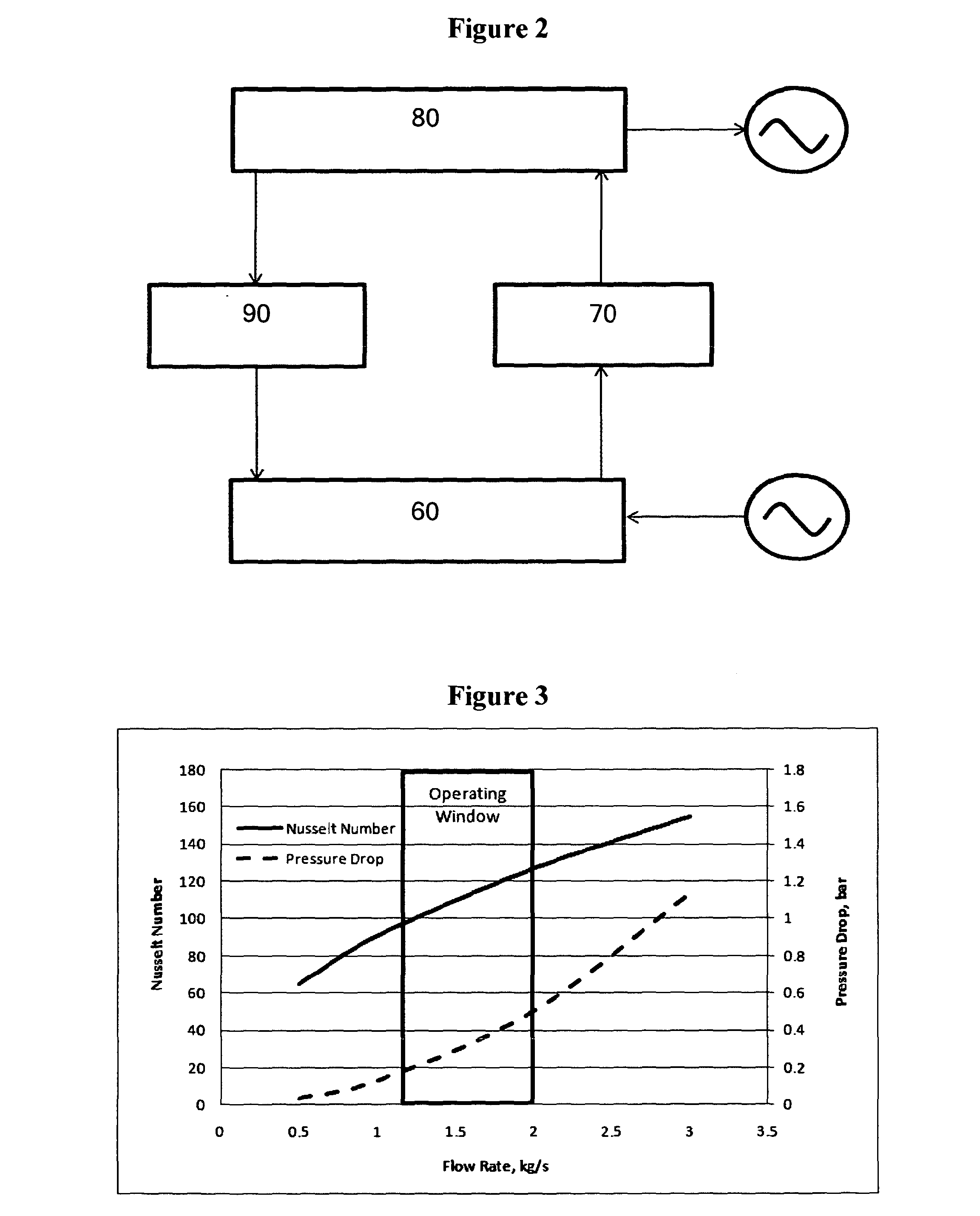Method and apparatus for storing thermal energy
a technology of thermal energy and storage method, which is applied in the direction of lighting and heating apparatus, regenerative heat exchangers, heat storage plants, etc., can solve the problems of increasing the pressure loss of htf generated across the thermal store, the amount of cold energy remaining in the process air exhausted, and the effect of reducing the cross-sectional flow area
- Summary
- Abstract
- Description
- Claims
- Application Information
AI Technical Summary
Benefits of technology
Problems solved by technology
Method used
Image
Examples
Embodiment Construction
[0121]In a preferred embodiment, the present invention addresses the needs identified above by providing a thermal energy storage device and method in which the aspect ratio (flow area to length) for the charging and discharging phases of the store can be varied.
[0122]For example, in the case of a thermal store in a cryogenic energy storage system, a 4 hour charging period is typically required for a 20 hour discharge period. Therefore, the flow rates during the charging period will typically be five times larger than those during the discharge period and it is desired to provide a system with optimum properties during both charge and discharge.
[0123]In the case of a cryogenic energy storage system, the thermal masses are cooled down during the charging process and then cold gas is extracted from the store during the discharge process. The following detailed description is specific to a cryogenic energy storage system. However, the disclosed thermal storage device and method could e...
PUM
| Property | Measurement | Unit |
|---|---|---|
| aspect ratio | aaaaa | aaaaa |
| aspect ratios | aaaaa | aaaaa |
| thermal | aaaaa | aaaaa |
Abstract
Description
Claims
Application Information
 Login to View More
Login to View More - R&D
- Intellectual Property
- Life Sciences
- Materials
- Tech Scout
- Unparalleled Data Quality
- Higher Quality Content
- 60% Fewer Hallucinations
Browse by: Latest US Patents, China's latest patents, Technical Efficacy Thesaurus, Application Domain, Technology Topic, Popular Technical Reports.
© 2025 PatSnap. All rights reserved.Legal|Privacy policy|Modern Slavery Act Transparency Statement|Sitemap|About US| Contact US: help@patsnap.com



